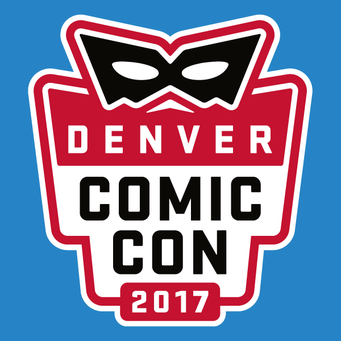Written by Joel T. Lewis With the wide variety of panels available at Denver Comic Con it's rare that I attend a discussion similar to one I might have seen the year before. However, over the last couple of years Dr. Lee Francis IV of Native Realities Press has brought together some important figures from the Native American and Indigenous creative communities to discuss the role and representation of Native peoples in popular culture and I try to attend at least one of their panels every year. Dr. Francis started by leading the panel through a brief history of Native representation in pop culture. Francis’ presentation defined each Native archetype throughout history while also examining the motivation for (and if not motivation for, the effect of) portraying Natives this way. Francis began with the Noble Savage and Earth Mother archetypes. Both products of exotic ideals of masculine and feminine energy, the Noble Savage and Earth Mother inform a lot of lazy representations of Native Americans in fiction, as the men are always shirtless, adorned with feathers, accompanied by an animal companion, and toting a bow and arrow, and the women are fertile, flowing-haired, guardians of the natural world. These figures are often used as counterpoints to Anglo Colonist villains with no respect for the natural world. These figures, while still present in modern fiction, dominated the popular portrayal of Native Americans until the mid-1700’s when the 'Vanishing Indian' came into existence. This spurred a multitude of 'The Last of the <Insert Tribe Here>' narratives, which served to placate the colonial audience by insisting that the atrocities enacted on the native people while inhumane, were irreversible as those tribes were nearly extinct. These narratives often include an Anglo Hero whose compassion and respect for the vanishing culture enables them to absorb some aspect of the native’s magic or power. Francis referred to Avatar as the most recent example of this trope. Following the Vanishing Indian, fiction saw the rise of the 'Red Devil' villain character whose early appearance in Twain’s 'Tom Sawyer' informed the characterization of countless Native American villains in the western film genre. 'Injun Joe,' Twain’s Half-Breed terror and Tom Sawyer’s loveable roguishness established a dichotomy crucial to understanding the popular portrayal of Native Americans. The treachery and terror associated with the Red Devil figure set against the fun-loving resourceful cleverness of Tom Sawyer, the all-American hero, help to ease the guilt of American colonialism. If an audience can see the people they’ve marginalized and systematically slaughtered as blood-thirsty and treacherous those atrocities slowly become justifiable in the public consciousness. Francis then moved to discuss the Drunken or Lazy Indian trope where a native character is only included as a novelty used for comedic effect and finally the Neo-Noble Savage. This traditionally tragic figure is typically caught between cultural identities and the philosophies that come along with them, often choosing to abandon their native culture to adapt and assimilate into western society in order to prosper. The panel was then opened up to the panelists to discuss the projects they’ve contributed to and are working on and how they’ve worked to counteract the stereotypical representation of Native people in their own work. One of the panelists, Renee Nejo is the developer and lead artist of the Blood Quantum video game, a turn-based, real-time strategy game meant to encapsulate the frustration and mechanics of imposed cultural identity definitions. Nejo described her unique position as a white-passing native woman and spoke about her desire to accurately represent the strong older native women in her life with her work. Popular culture’s representation of women is far from ideal in in general, but representation of older Native American women is nonexistent and Renee is working to craft figures that accurately represent those women in her own life. Panelist, Author, Actor, and Director Jon Proudstar explained the motivation for his 1996 comic Tribal Force. Disgusted by the lack of accountability within the Native community with regard to child molestation and the lack of Native Heroes with substance or identity, Proudstar became the very first Native American author to write an all Native Comic Book. Tribal Force’s female protagonist is a survivor of sexual abuse and is an example of strength for a community whose members experience an alarming number of abuse of this kind. Proudstar is an outspoken Native creator whose passionate words on the history of the racial slur xxx-skins and the importance of never forgetting the true history of Native subjugation in America were poignant and inspiring. Native American figures are embedded within Popular Culture, but it is important to remember that, as is the case with all minority groups, those who write, direct, or portray these people in print on screen are seldom representatives of the culture portrayed. It is our responsibility as creators and consumers of pop culture to seek out and strive for positive and accurate representations of all cultures especially with regards to Native and Indigenous Americans. The power of storytelling is vital to reshaping how we honor the Native American people in the public consciousness and every year the panels organized by Dr. Lee Francis IV at Denver Comic Con do an outstanding job of showcasing important figures working to bring about this change.
0 Comments
Leave a Reply. |
Archives
March 2025
|
|
© 2012-2025, Nerds That Geek LLC.
All Rights Reserved. |
uWeb Hosting by FatCow


 RSS Feed
RSS Feed